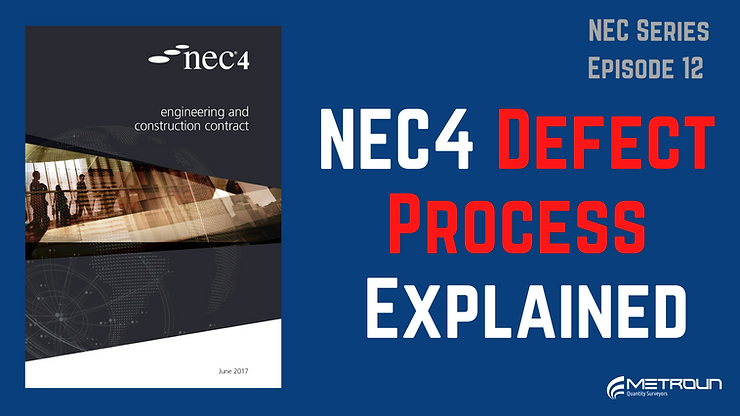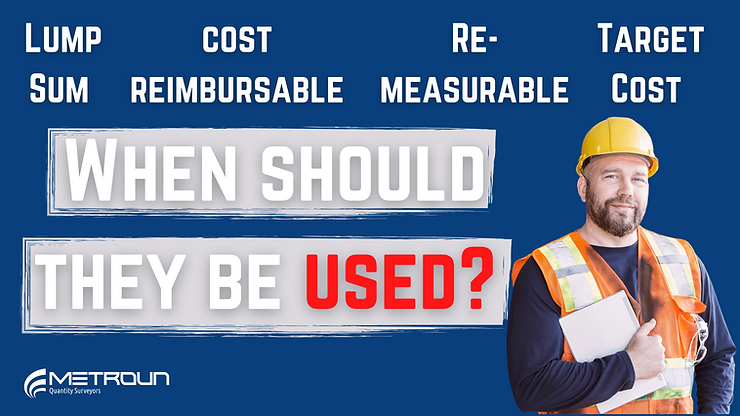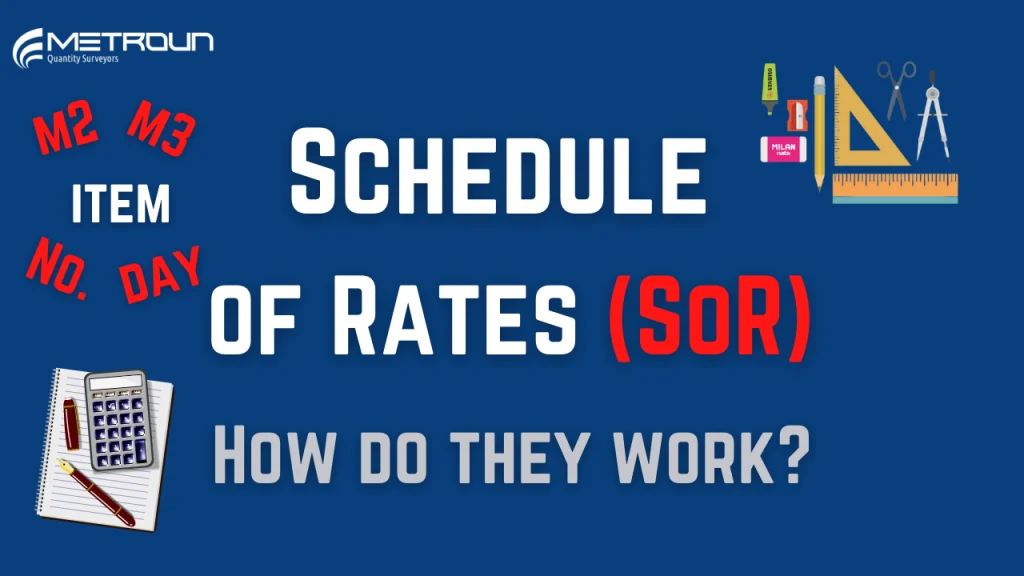NEC4 Defect Management Explained

What happens when the client discovers a defect on your project? It might not be something you’ve thought about before.
Good Vs Bad Graduate Quantity Surveyor Jobs

If you’re reading this post, you’re probably one of two people. Either you’re a loyal Metroun subscriber who reads every
What Is Project Cash Flow In Construction?

One of the most common reasons companies go out of business is because they simply run out of cash. Construction
Construction Contracts Compared | Lump Sum, Cost Plus, Re-measurable & Target Cost

If you’ve ever had construction or maintenance work carried out in your home, then you already know the different ways
How To Create A Construction Risk Register

Managing risk is a key and vital element of any construction project and the effective reduction of risks tends to
Blockchain Will REVOLUTIONISE Construction | Here’s How

Unless you’ve been living under a rock for the last few years, you’ve probably heard of cryptocurrencies. However, you may
Is the UK Government proposing a GCSE in Quantity Surveying?

Let’s be honest, at 15 did you really know what a Quantity Surveyor did? Actually, had you ever even heard
What Is Critical Path Analysis?

Critical path analysis (CPA) is a project management technique that requires the mapping out of every key task that is necessary to complete a project. It includes identifying the amount of time necessary to finish each activity and importantly the dependencies of each activity on any others. Sometimes known as the critical path method, Critical Path Analysis is used to set a realistic timescale for a project and the ability to track its progress along the way. How Critical Path Analysis Works: Critical path analysis identifies the sequence of crucial and interdependent steps that comprise a work plan from start to finish. It also identifies non-critical tasks which are still important for the overall project but, if they hit an unexpected snag, they will not hold up any other tasks, and therefore not endanger the execution of the project and the ultimate deadline. The concept of a critical path recognises that completion of some tasks in a project is absolutely dependent on the completion of others. In other words, some activities cannot physically start until others are finished – these are termed critical tasks which inevitably, present the risk of bottlenecks within a project programme. The remaining tasks are generally termed ‘noncritical’ tasks and have what we call ‘float’. There are several different techniques and indeed software’s that can be used to complete a critical path analysis. However, for this video we are going to show you one of the most common methods. Once determined, the next 6 steps will help to find the critical path on a project and allow a network diagram to be created. 1) List the project tasks – identifying details such as Task ID, Task description and estimatedduration. 2) Identify the dependencies of the tasks – such as Task D is dependent on Task A, Task B and A can run parallel to each other. Task F is dependent on tasks A, D and E etc. 3) Once you have this information, it’s possible to start building the Network diagram – within a network diagram, each task is put into its own box or circle and arrows between themare used to depict dependencies. 4) Put the estimated duration of the tasks into the task boxes or circles. 5) Find the critical path based on the longest sequence (each sequence is simply the list of tasks that are dependent on each other) – For each sequence write down the start and end time. The first activity has a start time of 0 and the end time would be the duration of that activity. The next dependant activity start time is the end time of the previous activity and the end time is the start time plus the duration. 6) Calculate any float there may be – float refers to the amount of flexibility of a specific task.It indicates the amount of time a task can be delayed without impacting subsequent tasks or the project end date. It’s important to remember that tasks on the critical path will have 0 float! So, now that we’ve explored what CPA is, let’s take a look at some of the advantages and disadvantages to this project management technique. Advantages: ·
Is Covid-19 a Force Majeure Event | Force Majeure in Construction

Insolvency is a huge risk in the construction industry. What first seems like the perfect project, can quickly become the
Schedule of Rates (SoR) Explained

Schedule of rates or (SoR) for short, is a list of rates used to value work requiring payment. The type


